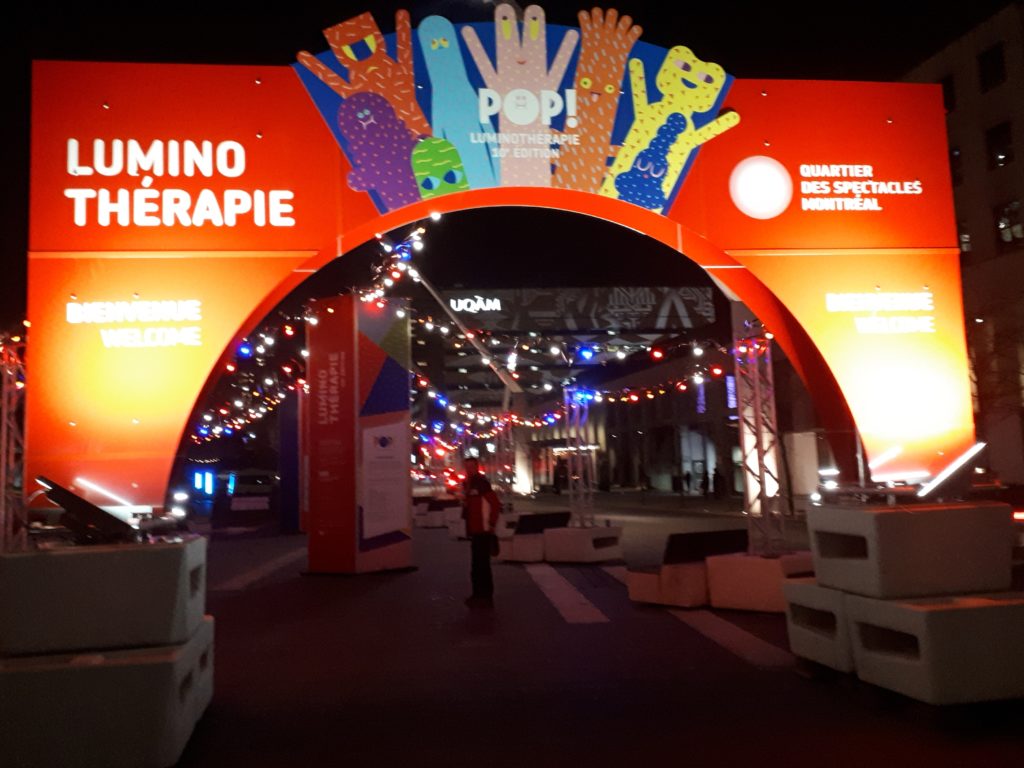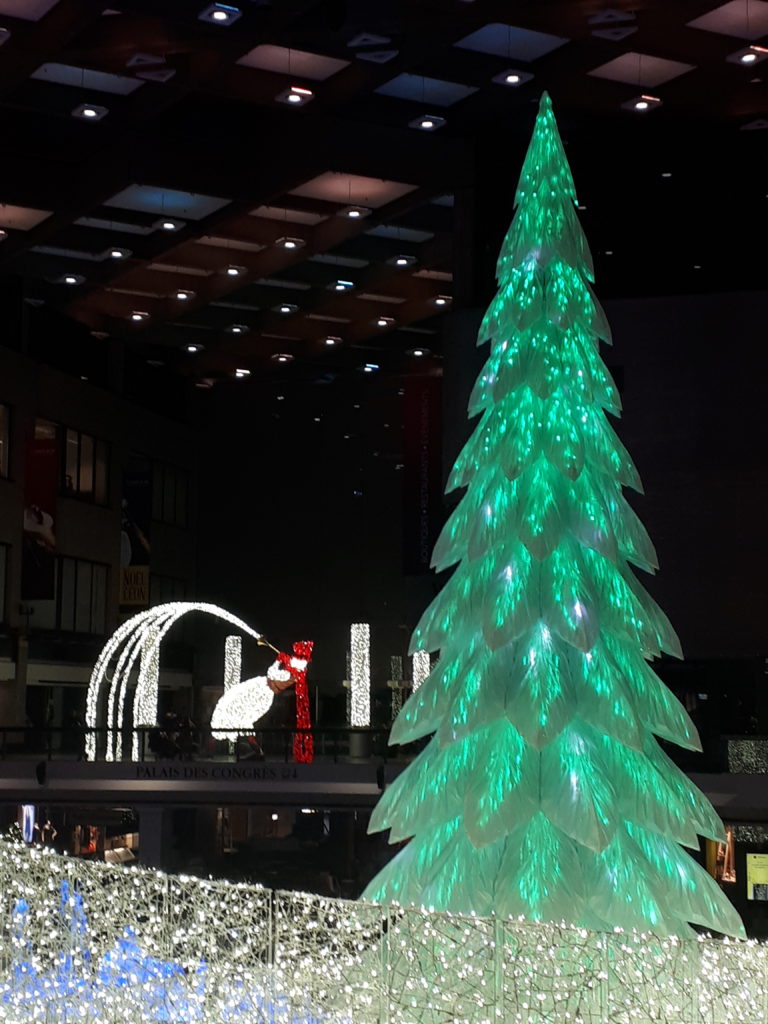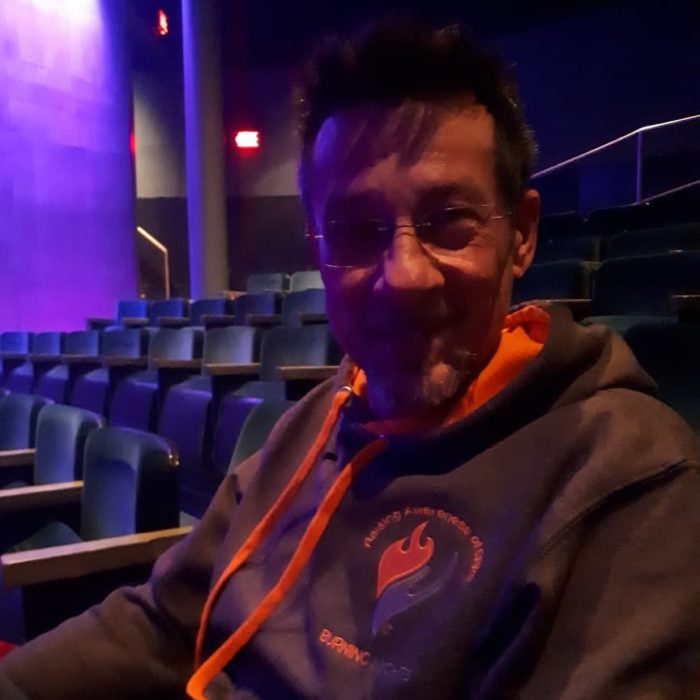About two months ago I wrote a post about an upcoming fantastic – and free! – scientific event that would be taking place here in Montreal this autumn. The topic of the entire evening would be cutting-edge research in the field of pain; from awareness to diagnosis to recovery, and perhaps even prevention. This TEDtalk-style event took place last night, and it truly was fantastic!
To start with a bit of background information, PAINtalks is organized by the Québec Network of Junior Pain Investigators (QNJPI). The concept is to present the audience with the “latest advances on pain, simply explained by the experts”(1), using 15-minute presentations. Each of these presenters was “asked to discuss controversies and advances in the field of pain.”(2)
I wasn’t able to attend any of the past PAINtalks, launched in 2015 and presented in a different city within the Province each year, so was really looking forward to this one. I even helped the organizers out a bit, by raising awareness of the event among patients, through my own social media channels and contacts!
The audience seemed to consist largely of healthcare professionals and researchers who are specialized in the field of chronic pain, along with at least a few other patients – like me. One of these patients was also a PAINtalks presenter; I’ll tell you more about her a bit later in this post.
It was a Montreal-style event, in that it was bilingual; there were presentations in English and in French, with live translation available into the other language. The master of ceremonies for the event was Stéphane Crête, a well-known and award-winning local actor, who did a good job of lightening the serious topics with humour and compassion. He also alternated between French, his own language, and English during PAINtalks 2019.
At this point, I should mention that I’m not going to describe the entire event; the QNJPI will be posting a recorded version to YouTube soon, so you’ll be able to view the 2019 edition of PAINtalks there.(3) Instead, I’m going to share with you my personal highlights of the event; the comments, phrases, or topics that struck me as being the most interesting. Here goes…
The first speaker was Matthieu Vincenot, with a French neuropsychology presentation on “Personalised pain medicine – Utopia or truth?” His doctoral research involves how psychophysiological markers of the endogenous mechanisms of pain modulation can affect the treatment of chronic pain patients.
Matthieu made two comments that struck a chord with me. First off, he said that “Tout le monde n’as pas mal de la même façon”, which means that people in pain don’t all experience their pain in the same way. Were you nodding your head as you read that line, thinking to yourself: “That’s so true!”? I was, when he said it, because this expresses a reality of my own disease.
Complex Regional Pain Syndrome (CRPS), still sometimes known as Reflex Sympathetic Dystrophy (RSD), is known to present differently in different individuals. What that means is that my experience of CRPS will almost certainly be different from another patient with the same condition, even if we receive treatment within the same pain management unit (PMU) or chronic pain clinic.
The second comment from Matthieu that struck me? The fact that 70% of chronic pain patients continue to have pain, despite treatment; again, sadly, CRPS would be a perfect example of this statement.
Next up was Junie Carrière, a pain psychologist, with an English talk entitled: “What do you expect? How your expectations can shape your recovery”. She’s originally from Montreal, and is currently completing a postdoctoral research fellowship at Harvard University. Junie’s research involves the expectations of patients with chronic pain, and how those expectations impact their outcomes.
It came as no surprise that her research has shown that a positive outlook can have a positive impact on a patient’s recovery from chronic pain; this topic came up often during my sessions with pain psychologists at the university-hospital PMU at which I receive treatment for CRPS.
Fannie Allen Demers then presented, in French this time, on: “What if chronic pain no longer meant suffering?” She provided some very helpful tips for healthcare professionals who work with chronic pain patients:
- Use appropriate words, language that reflects the reality of chronic pain
- Listen to your patient
- Explain the science of persistent pain, in patient-friendly terms
How much better would each patient journey be, for a person living with persistent pain, if their physician would do these three simple things? I was lucky; the PMU at which I’m treated already does each of these things – and so much more – to help their patients!
Each of the presenters to this point of the evening was a younger researcher, which makes sense as PAINtalks is hosted by the Québec Network of Junior Pain Investigators (QNJPI). The event did include two more senior researchers, and the first of them was the next speaker.
Dr. Pierre Rainville holds a PhD in experimental neuropsychology, and works within the Department of Stomatology at the Université de Montréal. His postdoctoral research was completed almost twenty years ago, in cognitive neuroscience. His French-language talk was on “Hypnosis and pain: the paradox of self-regulation with no control”.
Yvonne Brandelli spoke to us, in English, discussing her PhD research involving children living with chronic pain from juvenile arthritis. Definitely an under-represented group in pain psychology research, her area of expertise. Her talk was: “When what helps hurts”.

At that point there was an intermission, and I had the opportunity to meet one of these young pain researchers in person – after we’d been communicating for a while over on Twitter.
He’s actively involved with the Canadian Pain Society (CPS), with which I was a Patient Partner at their 2018 annual scientific meeting. It was great to finally meet Kyle Vader IRL; Twitter-speak for in real life ‘-)
Kyle is currently a doctoral student in Rehabilitation Science at Queen’s University in Ontario. He’s also a licensed physiotherapist, within the Kingston Health Sciences Centre. His current research involves the “management of chronic musculoskeletal pain in primary health care”.(4) Important work, for so many people living with this type of chronic pain.
When PAINtalks resumed after the break, we had the pleasure of hearing from Don Daniel Ocay. His PAINtalk, in English, was on “Breaking their silence: Are we doing enough for the kids?”
He shared with us the difficulties of conducting chronic pain research involving children, and commented that “although we know that the brains of adults with persistent pain are changed by their pain, we need to find out how this occurs in kids.” (I may not have used his words, but that’s what I live-tweeted during his talk!)

©Sandra Woods 
©Sandra Woods
Let me tell you a bit about Don Daniel’s research. In 2018 he completed a bachelor’s degree in physiology with a minor in biotechnology, and is now completing a Master’s degree in Experimental Surgery. His research is being conducted at the clinical research laboratory of the still-new Shriners Hospitals for Children, here in Montreal:
“The methods he uses include quantitative sensory testing (QST) and electroencephalography. His goal is to establish reference values for QST from a healthy Quebec sample which will provide a deeper understanding of the sensory abnormalities that occur in a chronic pain state in pediatric patients.”(4)
A chronic pain patient then took the stage! Geneviève Filion presented, in French, a PAINtalk entitled: “Re-live through neuroplasticity”. The topic was neuroplasticity as tool for relief of chronic pain from fibromyalgia and migraine. It was fantastic to see that the organizers had again saved a presentation space for a person living with chronic pain ‘-)
The next talk, also in French, began with a one-person skit: “Pain during sex: how to get out of the nightmare?” Marie-Pierre Cyr, a physical therapist completing her doctoral studies, walked us through the experience of a person with chronic pelvic pain. Surprisingly, this condition can affect men – although it predominantly affects women.
Then came the elephant in the room. On a slide, not an actual elephant! That image was Jamie Katherine Moy’s introduction to her talk: “An elephant never forgets anything… except pain?” Her research is centred around the fact that memory and pain are both impacted by calcium in our neurons. She is using that knowledge to look for ways to block the sensations of chronic pain while preserving a patient’s memory.

Moving from elephants to dogs, the second non-junior researcher was Dr. Eloise Carr: “How to Optimize Human-Animal Pain Interactions (HAPI) for People Who Have Chronic Pain and Live with a Dog”. As you may have guessed from the title, this English presentation discussed the positive impact of dogs on patients with persistent pain.
Dr. Carr’s talk included a comment that I’ve often heard or read in the chronic pain literature, the fact that veterinarians get waaaaay more pain management training than do physicians. Sad, but apparently still true.

©Sandra Woods 
©Sandra Woods
That marked the end of the series of fifteen-minute presentations, but PAINtalks wasn’t over yet; there was a closing cocktail and networking session afterwards
Although I would have loved to be able to stay and chat with the other attendees, the cocktail was held in a fairly small room and I was too concerned that someone would inadvertently bump into my CRPS-affected hand and lower arm. If that were to happen, I’d likely either faint or vomit – neither is a good option in a crowded cocktail area, right?!
To make up for my disappointment at not being able to stay for the cocktail, my sweetheart took me out for a late-evening gelato and then a stroll through the still-being-set up “LuminoThérapie” (Light Therapy) large-scale public lightshow festival site. So all’s well that ends well ‘-)

©Sandra Woods 
©Sandra Woods 
©Sandra Woods
Speaking of my husband, he was wearing a brand new hoodie for CRPS Awareness Month which happens to be November – so PAINtalks had perfect timing to tie into my own CRPS awareness-raising activities!

By the way, my better half doesn’t usually like to be in photos, but he let me snap this one of him in this orange-accented top from the UK charity Burning Nights CRPS(6)… orange is the colour of CRPS, and it has always been his favourite colour!
References:
(1) Québec Network of Junior Pain Investigators (QNJPI). PAINtalks. QNJPI website. Online. Accessed 24 Nov 2019:
https://qnjpi-rqecd.ca/paintalks/
(2) Québec Network of Junior Pain Investigators (QNJPI). PAINtalks 23.11.2019. Fourwaves. Online. Accessed 24 Nov 2019:
https://www.fourwav.es/view/1418/info/
(3) Québec Network of Junior Pain Investigators (QNJPI). YouTube channel. Online. Accessed 24 Nov 2019:
https://www.youtube.com/channel/UC0zof4oHWxeMAVzWHgUc-2A/videos
(4) Québec Network of Junior Pain Investigators (QNJPI). Current Board Members. QNJPI website. Online. Accessed 24 Nov 2019:
https://qnjpi-rqecd.ca/current-board-members/
(5) Kyle Vader. Student personal and research introduction. Queen’s University, Faculty of Health Sciences; School of Rehabilitation Therapy. Online. Accessed 24 Nov 2019:
https://www.rehab.queensu.ca/academic-programs/rhbs/student-profiles/phd
(6) Burning Nights CRPS: Increasing awareness of Complex Regional Pain Syndrome in the UK and Worldwide. Burning Nights CRPS website; registered UK charity number 1166522. Updated 17 Sep 2019. Online. Accessed 24 Nov 2019:
https://www.burningnightscrps.org/

